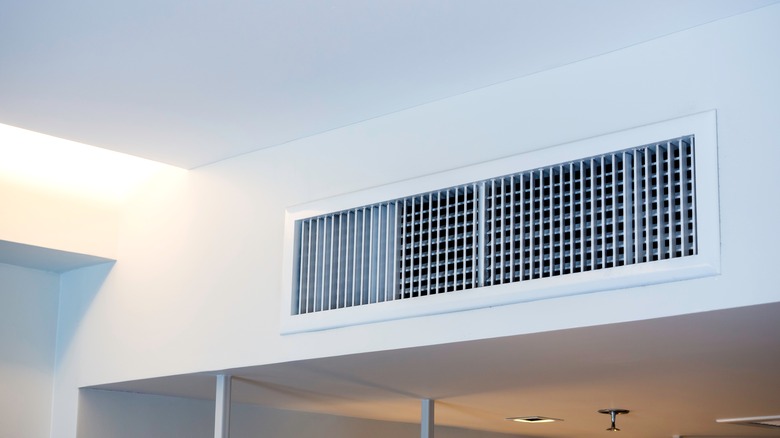Efficiently Cool Your House By Checking Your Air Vents For This
If your air conditioning system struggles to cool the upper floor of your home in the summer, it's possible you have an air conditioner that is too old, preventing it from keeping all floors at a reasonable temperature. Before taking the step of replacing your AC unit, though, make sure you check the position of your return vents on the upper floor. In a TikTok video, DIY guru @ken.c.long advises viewers to look at the direction of the slats on the return grill. If the slats are aimed downward, the return is not efficiently pulling in the hot air that's near the ceiling. This could leave the upper floor warmer than it needs to be.
You also can adjust the air vents that supply the cooling from the AC and the warmth from the furnace to improve the temperature throughout the home and to make it more consistent from room to room. If you have a room on the lower floor that is too cold during the summer, install a dampening grill on the air supply vent. Then, close it part way; this will reduce the introduction of cool air into the room and allow more cool air to move toward the upper floors of the home that are too warm. You don't want to close the air supply dampening grill completely, as closing too many of these grills can overstress the AC system. It also can cause a buildup of humidity in the room.
How to adjust your air supply and return grills to improve comfort in the home
To determine if you need to flip the direction of the air return grills, look at the slats on any grills on the upper floor wherever it is too warm. If the slats are aimed downward, unscrew the grill and turn it 180 degrees. Then, reattach it to the wall, and the slats will be pointing upward, allowing the system to more easily pull warm air from the ceiling. Warm air naturally rises to the top of the room. During wintertime, you can flip the grill around again. This allows the system to pull cooler air from the lower portions of the room rather than drawing in the warm air you want to keep in the room.
This hack works better in a home built within the past few decades because such homes often have multiple air return grills spread throughout the home. Older homes may only have one large air return grill.
If you are unsure whether you're looking at a return or supply grill, you can try a couple of tricks to figure it out. Hold a tissue in front of the vent. If it blows outward, it's a supply vent. If it sucks inward, it's a return vent. Additionally, return vents typically have grills with no ability to adjust the flow of air. Supply vents often have the ability to adjust the amount of flow through a dampening lever.
